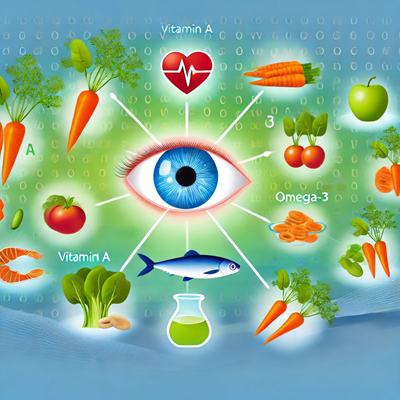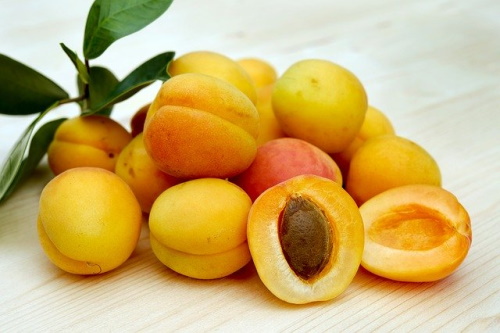Before I get into the best foods for eye health, let’s take a minute to understand how remarkable the eye is. Because of its incredibly high precision and performance, the eye is one of the most amazing organs in the body.

All of the muscles of the eye are in constant movement to carry out three simultaneous functions necessary for vision:
- Exploration of the field of vision,
- Opening and closing of the pupil according to the light available
- The curve of the eye’s lens is modified according to the distance of the viewed object, thus bringing it into sharp focus.
At the same time as performing all of these tasks, the eye continuously sends information to the brain through the optic nerve. It is calculated that while awake, the million or so nerve cells that form the retina send information to the brain at a rate equivalent to 100 Mb per second. Today, only the fastest computer networks can match this transmission speed.
Related reading:
- Browse more Foods articles: https://naturalhealthmessage.com/nutrition/foods/
- Eye & Vision guides: https://naturalhealthmessage.com/conditions/eye/
- Supplements & reviews: https://naturalhealthmessage.com/supplements/
Best Foods For Eye Health
To carry out all of these complex functions, the eye only needs a small amount of oxygen and a few other substances found in foods such as these:
VITAMIN A: This is necessary for the formation of rhodopsin, the light-sensitive pigment found in the cells of the retina. It is also necessary for maintaining the conjunctiva (the anterior membrane of the eye) moist and in good condition.
CAROTENOIDS: Important on the list of best foods for eye health because they’re natural dyes found in plant-based foods. They act as antioxidants and help prevent macular degeneration of the retina.
VITAMINS C AND E: Antioxidants are found almost exclusively in fruits, vegetables, nuts, and grain germ. Their lack leads to cataracts and vision loss.

APRICOT: The consumption of apricots maintains vision in good condition and gives sparkle and beauty to the eyes, which are characteristic of good health. This is not due exclusively to the action of provitamin A but also to the combined action of other vitamins and minerals accompanying it.
Apricots are recommended in cases of conjunctival dryness, chronic irritation or itching of the conjunctiva, loss of visual acuity due to retinal atrophy, and night blindness.
CARROT: Carrots are an oldie but goodie. This vegetable is probably one of the best-known foods for eye health. They’re beneficial in general diseases of the retina and eyes, skin disorders, gastritis, excess gastric acid, colitis, and cancer prevention.
SPINACH: Spinach is on this list of the best foods for eye health because it can aid with retinal disorders. The macula is a small yellow spot about two millimeters across the retina’s center. It corresponds to the area of the highest visual acuity. The degeneration of this susceptible area of the retina is the primary cause of blindness among the elderly.

An exact investigation at the Massachusetts Eye and Ear Infirmary and Harvard University shows that people between 55 and 80 who regularly eat spinach present a much lower risk of losing visual acuity due to macular degeneration.
The protective effect of spinach on the retina is greater even than that of carrots. This fact has caught scientists’ attention, attributing it to spinach’s high levels of lutein and zeaxanthin. These substances are carotenoid-type vegetable pigments, which, although they are not converted to vitamin A, as beta-carotene is, act as potent antioxidants that protect the sensitive cells of the retina.
Regular consumption of spinach is recommended to all who wish to preserve sight, particularly those over 50.
The best foods for eye health are predominantly plant-based, particularly those mentioned in this article. They provide the nutrients that the eyes need to function properly.
Health Disclaimer: The information on this website is for educational uses only and is not a substitute for professional medical advice. Always consult an authorized healthcare provider for any health concerns before using any herbal or natural remedy. We do not establish, treat, cure, or prevent any disease. Reliance on any material from this website is solely at your own risk. We are not responsible for any adverse effects resulting from the use of information or products mentioned on this website.
REFERENCES
- George D. Pamplona-Roger, M.D. “Encyclopedia Of Foods and Their Healing Power.” George D. Pamplona-Roger, M.D. Encyclopedia Of Foods and Their Healing Power. Trans. Annette Melgosa. Vol. 2. Chai Wan: Editorial Safeliz, 2005. 27,22,25,29.
- National Institutes of Health (NIH): https://ods.od.nih.gov/factsheets/VitaminA-HealthProfessional
- American Heart Association (AHA): https://www.heart.org/en/healthy-living/healthy-eating/eat-smart/fats/fish-and-omega-3-fatty-acids
- U.S. Department of Agriculture (USDA) FoodData Central: https://fdc.nal.usda.gov
- Journal of Ophthalmic & Vision Research: https://www.ncbi.nlm.nih.gov/pmc/articles/PMC4210186
- Harvard T.H. Chan School of Public Health: https://www.hsph.harvard.edu/nutritionsource/healthy-eating-plate
- The Age-Related Eye Disease Study 2 (AREDS2) Research Group. (2013). Lutein + zeaxanthin and omega-3 fatty acids for age-related macular degeneration: The Age-Related Eye Disease Study 2 (AREDS2) randomized clinical trial. JAMA, 309(19), 2005-2015.
- National Institutes of Health (NIH). (2021). Vitamin A: Fact Sheet for Health Professionals. Office of Dietary Supplements.
- The Vision Council. (2016). Hindsight is 20/20/20: Protect Your Eyes from Digital Devices.
- Academy of Nutrition and Dietetics. (2023). Healthy Cooking Tips.
- Piccardi, M., & Mancino, R. (2014). Saffron: A potential therapeutic agent in ophthalmology. Journal of Ophthalmic & Vision Research, 9(4), 475-482.
- Gupta, S. C., Patchva, S., & Aggarwal, B. B. (2013). Therapeutic roles of curcumin: Lessons learned from clinical trials. The AAPS Journal, 15(1), 195-218.
- Harvard T.H. Chan School of Public Health. (2023). Healthy Eating Plate & Healthy Eating Pyramid.
